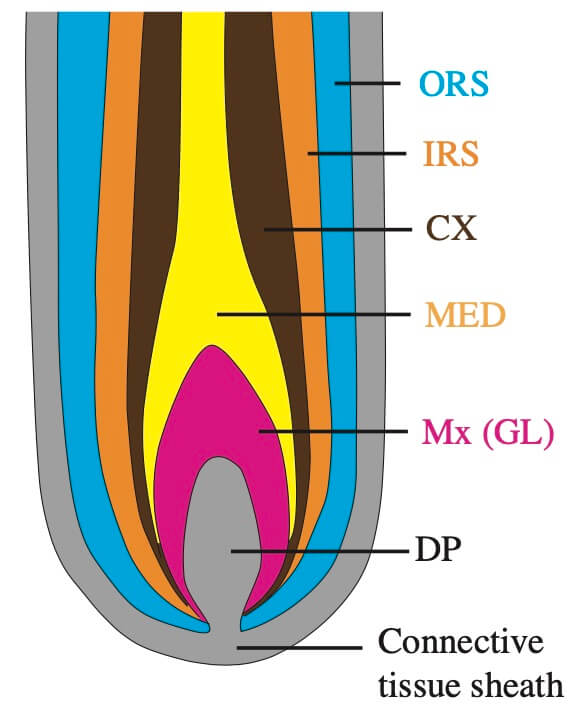RIVERSIDE, Calif. — Researchers may have found the key to treating baldness. Scientists from the University of California discovered a single chemical in hair follicles that controls when cells divide and when they die.
Not only could it cure baldness, researchers say, but it could also speed up wound healing since follicles are a source of stem cells.
“In science fiction when characters heal quickly from injuries, the idea is that stem cells allowed it,” says Qixuan Wang, study co-author and mathematical biologist at UC Riverside, in a university release. “In real life, our new research gets us closer to understanding stem cell behavior, so that we can control it and promote wound healing.”
Wang’s team decided to study hair follicles because they’re the only human feature that regenerates automatically and periodically, even without injury. They found that the TGF-beta protein controls the process by which hair follicles cells, including stem cells, divide and form new cells. Conversely, the process can also trigger the cell’s own death, leading to the death of the whole hair follicle and baldness.
“TGF-beta has two opposite roles. It helps activates some hair follicle cells to produce new life, and later, it helps orchestrate apoptosis, the process of cell death,” explains Wang.
Study authors say if the cell produces a certain quantity of TGF-beta, it activates cell division, but too much of it causes apoptosis.

How can TGF-beta treat baldness?
It’s not known why hair follicles kill themselves. Researchers say some hypotheses claim it is an inherited trait from animals shedding fur to survive hot summer temperatures or a form of camouflage.
“Even when a hair follicle kills itself, it never kills its stem cell reservoir,” notes Wang. “When the surviving stem cells receive the signal to regenerate, they divide, make new cells and develop into a new follicle.”
Study authors believe it’s possible to activate follicle stem cells and stimulate hair growth, if they can more accurately determine the way TGF-beta activates cell division and how the chemical communicates with other genes.
Wang’s team adds that perfect wound healing requires regeneration of hair follicles, since humans possess skin covered with hair. As an added benefit, controlling levels of TGF-beta could also cure baldness.
“Potentially our work could offer something to help people suffering from a variety of problems,” says Wang.
The study is published in the journal Biophysical Journal.
You might also be interested in:
- Best Shampoo for Thinning Hair
- Best Hair Growth Vitamins
- Best Oils For Hair Growth
- Best Natural Shampoos
- Best Children’s Shampoo

